A Tribute to Rosie the Riveter
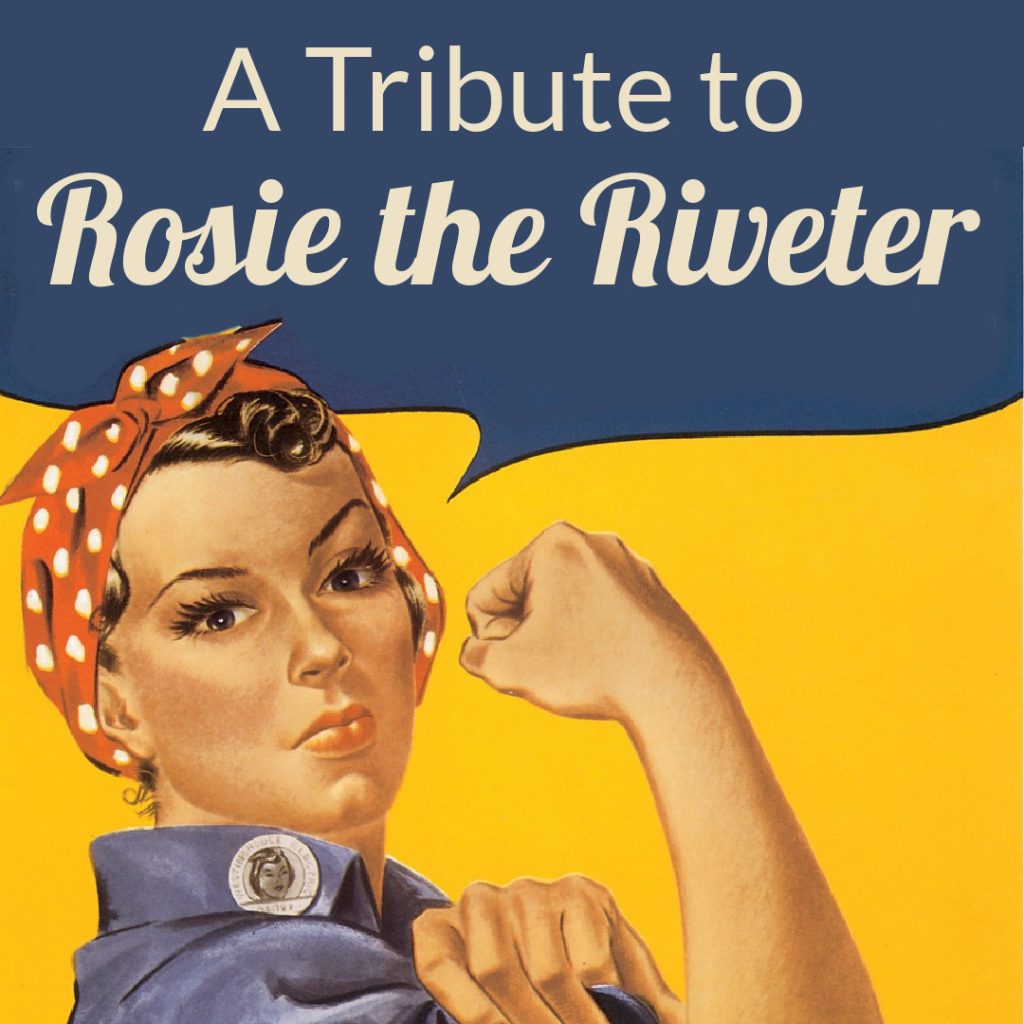
Rosie the Riveter has come to represent the women of World War II. We all love Rosie. She’s strong but cute. She has biceps, but she curls her hair and does her nails. And look at that chin—she won’t let anyone tell her what she can or can’t do. She is woman; hear her riveting gun.
The 1940 census counted 132 million people in the USA. During the war, 11 million men and women served in the armed forces. Even if the economy had continued at its pre-war level, that would have caused a significant drop in the workforce. But with the enormous increase in production, more workers were desperately needed. And that meant women.
Recruiting Rosie
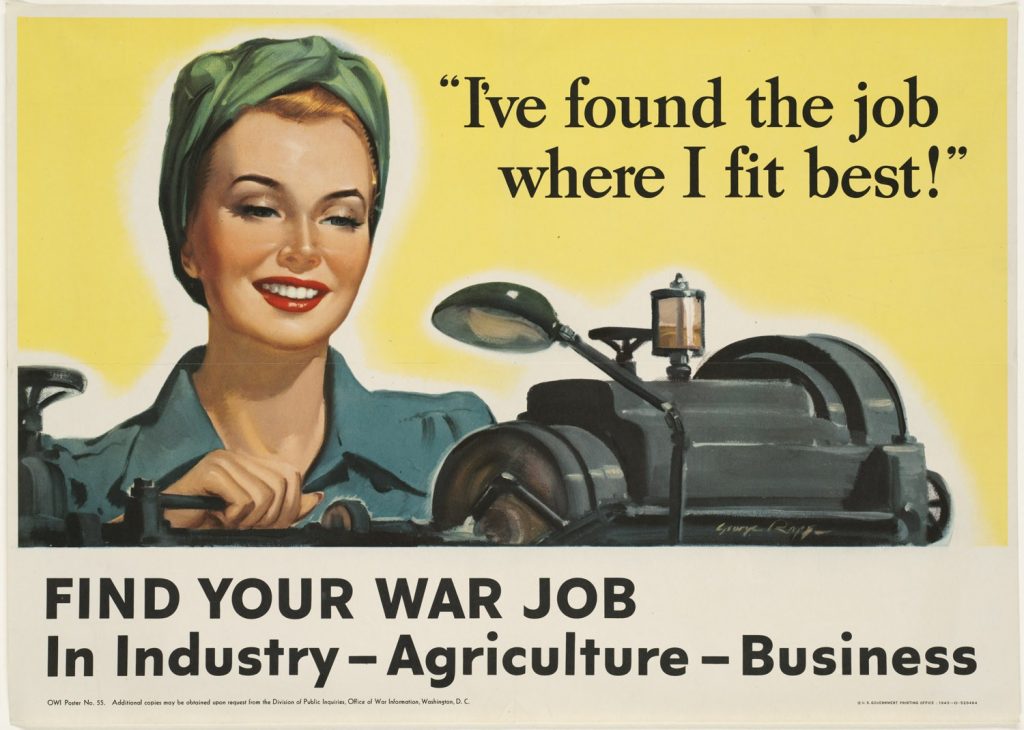
US poster, 1943 (US Office of War Information O-520464)
American industry actively recruited women to work in war jobs, and women’s war work was praised in songs, posters, advertisements, and movies.
The song “Rosie the Riveter” (Redd Evans/John Jacob Loeb, copyright 1942) most likely invented the term of “Rosie the Riveter.” The popular song praised the girl on the assembly line and was recorded by Kay Kyser, the Four Vagabonds, and others.
The “We Can Do It” poster by J. Howard Miller was introduced February 15, 1943 for a two-week in-house campaign at Westinghouse. At the time, the poster wasn’t seen nationwide, nor was it associated with “Rosie.” Not until the early 1980s was the poster rediscovered and embraced – and connected with Rosie.
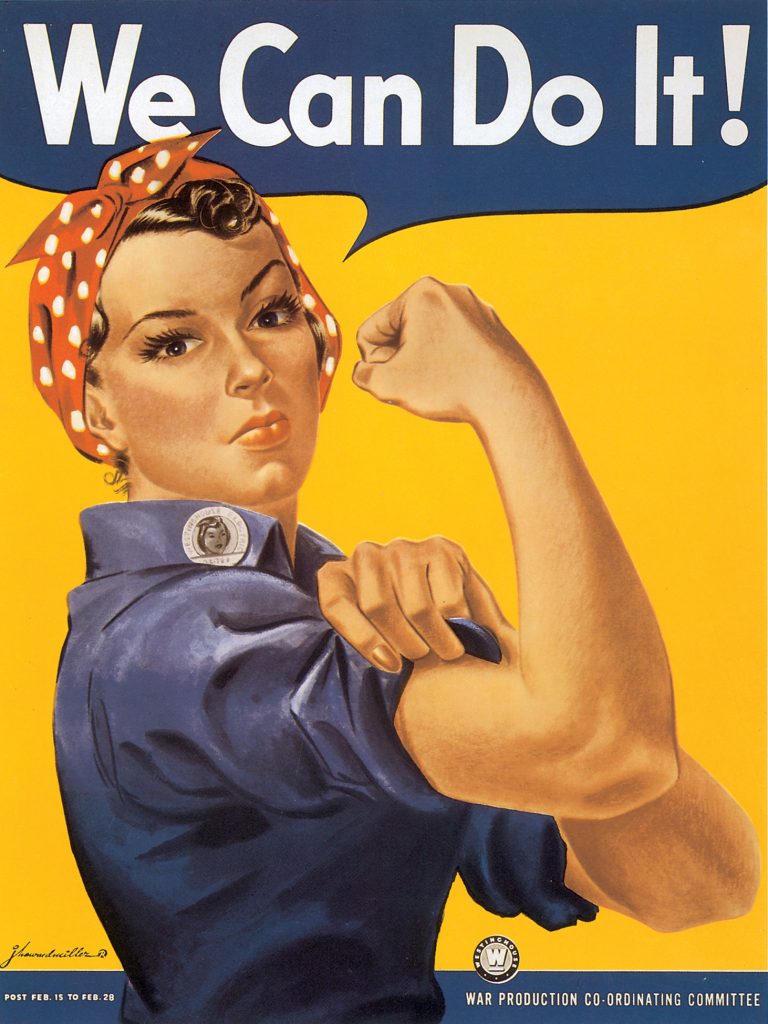
US poster by J. Howard Miller, 1943 (Library of Congress: 2021669753)
On May 29, 1943, Norman Rockwell’s “Rosie the Riveter” painting appeared on the cover of The Saturday Evening Post, most likely inspired by the song. Rosie’s foot stamps out Hitler’s Mein Kampf, a riveting gun lies across her lap, and “Rosie” is printed on her lunchbox. On April 9, 1944, a feature film called Rosie the Riveter was released, starring Jane Frazee.
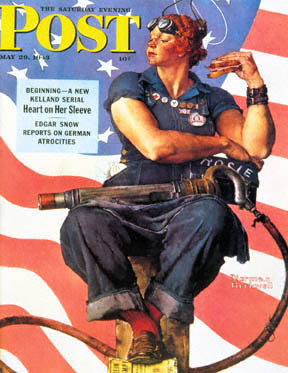
Norman Rockwell’s “Rosie the Riveter” on the cover of the Saturday Evening Post, 29 May 1943 (Fair use via Wikipedia)
Rosie the Riveter has come to represent all women who contributed to the war effort by stepping into men’s work boots.
Challenges for Rosie
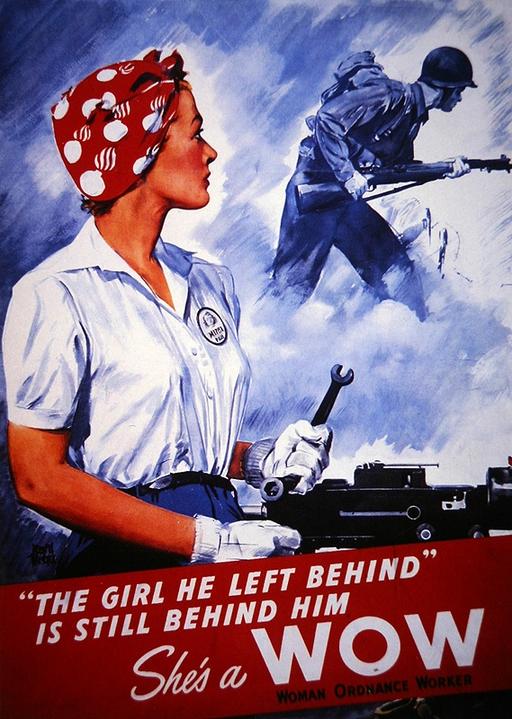
US poster recruiting Women Ordnance Workers, WWII
During the war, 19 million women held jobs outside of the home, up from 12 million in 1940—6 million were working outside the home for the first time. Thirty percent of working women worked in factories as Rosie the Riveter and Wendy the Welder and more. At first, they faced much opposition. Some believed women wouldn’t be capable of performing men’s jobs, and some were even convinced the women were there to seduce the men. However, Rosie and her friends proved to be able workers—and were even preferred in some jobs that benefitted from women’s smaller fingers and attention to detail.
They faced other challenges. While 2.75 million working women had children under the age of fourteen, day care was not available early in the war. Mothers relied on relatives or friends—or left the children unattended. Movie theaters reported an unsettling trend of young children left all day at the movies unsupervised. Savvy employers began to provide on-site day care, and centers were also established at schools.
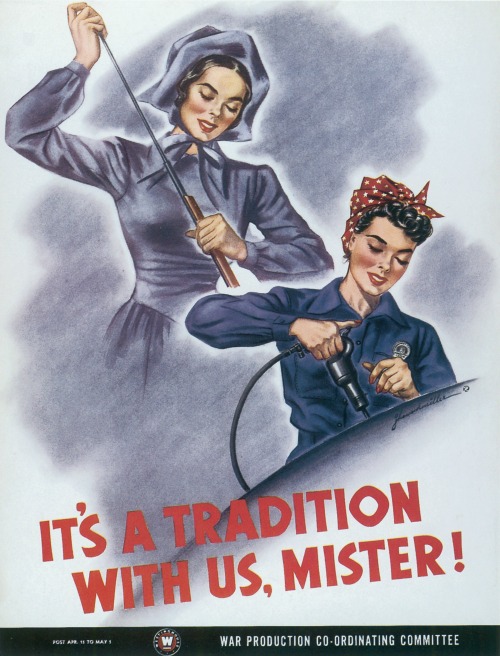
US poster by J. Howard Miller, WWII
Women struggled for equal treatment. Although the War Labor Board decreed in April 1943 that women in war jobs were to receive equal work for equal pay, the average wage for female workers remained significantly lower. As the newest employees on the job, women lacked seniority under union rules and were often stuck with the swing swift—an extra problem for mothers with young children at home.
Honoring Rosie
Women played an important role in the extraordinary increase in production during the war, contributing to the “Arsenal of Democracy” that helped win the war for the Allies.
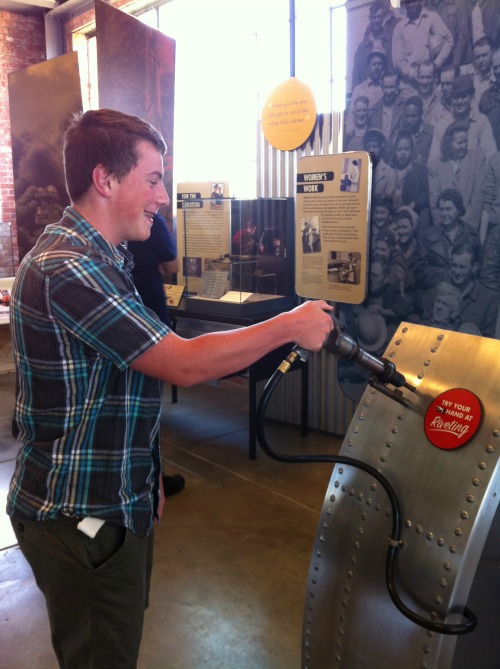
My son humoring his mother and operating the riveting gun exhibit at the Rosie the Riveter WWII Home Front Museum, Richmond, CA (May 2014)
Today Rosies are honored at the Rosie the Riveter WWII Home Front National Historical Park in Richmond, CA, located at the site of the Kaiser Shipyards where many of these women worked. The museum has excellent exhibits about women at work—and many Rosies serve as docents!
Here’s to all the Rosies! They could do it!
Selected sources:
Lingeman, Richard R. Don’t You Know There’s a War on? The American Home Front 1941-1945. New York: G.P. Putnam’s Sons, 1970.


Thank you so much. I enjoyed read this. Thank godthat there were women who would step up and service.
My mother-in-law was a Rosie at the Richmond Kaiser shipyards while her husband was overseas in the Pacific theatre. A good friend watched their daughter while she worked. Everyone pulled together to support each other and that is part of the reason that we won the war!!!